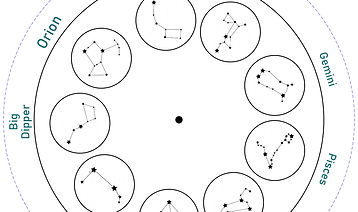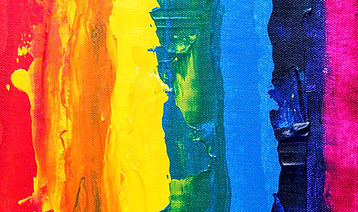

Projects

Welcome to the constellation wheel stem project! In this fun and educational activity, you'll create a spinning wheel featuring various constellations. Not only is this project a great way to learn about different star patterns, but it also makes for a beautiful decoration or teaching aid. With the addition of a flashlight, you can bring your constellations to life by making them glow in the dark.
Explore the magic of glow-in-the-dark painting with our Solar Painting activity! With special paint that glows in the dark, you can create amazing pictures that shine bright even when it's dark outside. How does it work? Well, the paint absorbs sunlight during the day, and then at night, it gives off that light, making your artwork glow! It's like having your very own glowing stars on paper. So, grab your paintbrush and let's get creative under the sun and stars!
The Orbeez Absorption Showdown experiment offers an engaging exploration into the fascinating world of hydrogel absorption. Kids are provided with an assortment of Orbeez beads of varying sizes and colours. Through this experiment, they immerse themselves in the scientific process, observing and comparing how different factors such as temperature, pH levels, or salt concentration affect the rate and extent of Orbeez absorption. As the beads absorb water, they swell and transform, providing a visually captivating display of hydrogel expansion. This experiment not only highlights principles of polymer science and osmosis but also encourages critical thinking as participants analyze the results and draw conclusions about the factors influencing absorption rates. This is always a guaranteed hit with the kids.
The science behind maracas involves how vibrations and sound are created when the instrument is shaken. This kit includes important characteristics of the Maracas and instructions to build your own.
The Straw Flute experiment invites kids to delve into the captivating world of sound and physics through a simple yet engaging activity. Using ordinary drinking straws of varying lengths, participants construct their own "flutes" by cutting and arranging the straws in specific configurations. As they blow air across the top of the straws, they produce different musical notes, demonstrating the fundamental principles of acoustics and sound production. Through this hands-on exploration, participants learn about the relationship between the length of a column of air and the pitch it produces, as well as how changes in the length and diameter of the straw affect the resulting sound. This experiment not only fosters an appreciation for the science of sound but also encourages creativity and experimentation as participants customize their straw flutes to create unique musical compositions.
The Straw Rockets experiment involves designing and constructing small rockets using simple materials such as straws, paper fins, and potentially a weight at the tip. These rockets are then launched using a slingshot mechanism using kinetic Energy with the goal of achieving a minimum distance of 20 feet.
Capillary Colours: A Rainbow Journey demonstrates capillary action, adhesion, cohesion, and colour mixing through a visually engaging and hands-on experiment. It provides a practical illustration of scientific concepts related to water movement in narrow spaces and the interactions between water and plant fibres. This kit includes an introduction to the science of capillary action and instructions for an activity.
Our hands are marvels of complexity, composed of numerous bones, muscles, and ligaments. This intricate structure allows our hands to execute movements that other parts of our body cannot. In this activity, we will showcase the vital collaboration of various hand components in facilitating movement, mirroring biomechanics principles underpinning robotics design. This demonstration emphasizes the role of bones, muscles, and tendons, illustrating how they enable us to move each finger independently or coordinate their movements simultaneously, much like the intricate mechanisms of robotic hands engineered for dexterity and precision. This kit includes an intro to Robotics, instructions & template to make your own.
The Marshmallow | Toothpick experiment combines creativity and engineering to explore the principles of seismic resistance. Participants are tasked with constructing structures using only marshmallows and toothpicks, simulating real-world architectural challenges. As they design and build their structures, they must consider factors such as stability, weight distribution, and reinforcement techniques to withstand simulated earthquakes. Through this hands-on activity, participants gain insight into how different structural elements contribute to a building's ability to resist seismic forces. They learn about concepts such as bracing, damping, and load distribution, which are essential for designing earthquake-resistant structures in earthquake-prone regions. This experiment not only fosters innovation and problem-solving skills but also provides a practical introduction to the science and engineering behind earthquake-resistant architecture.








